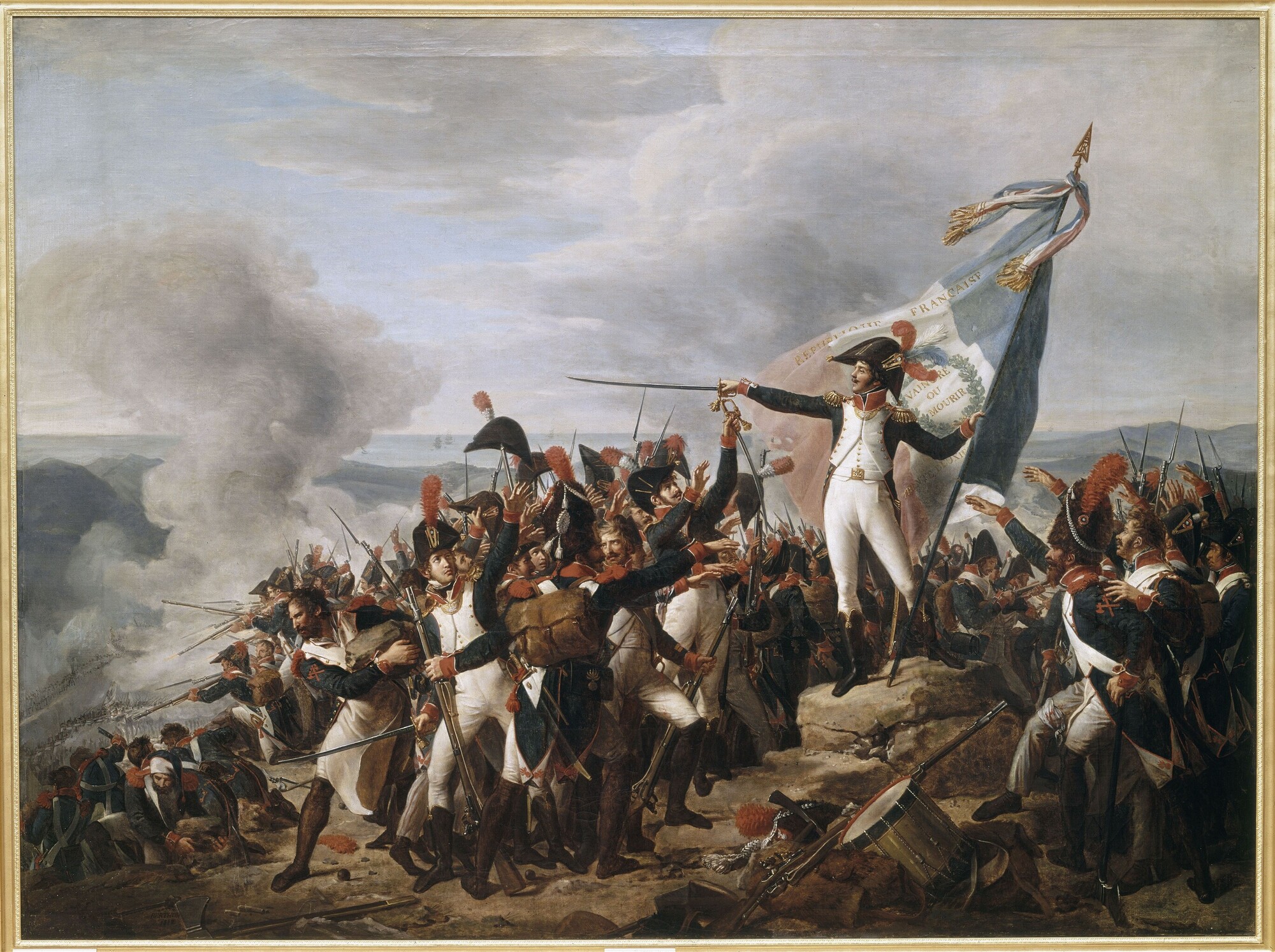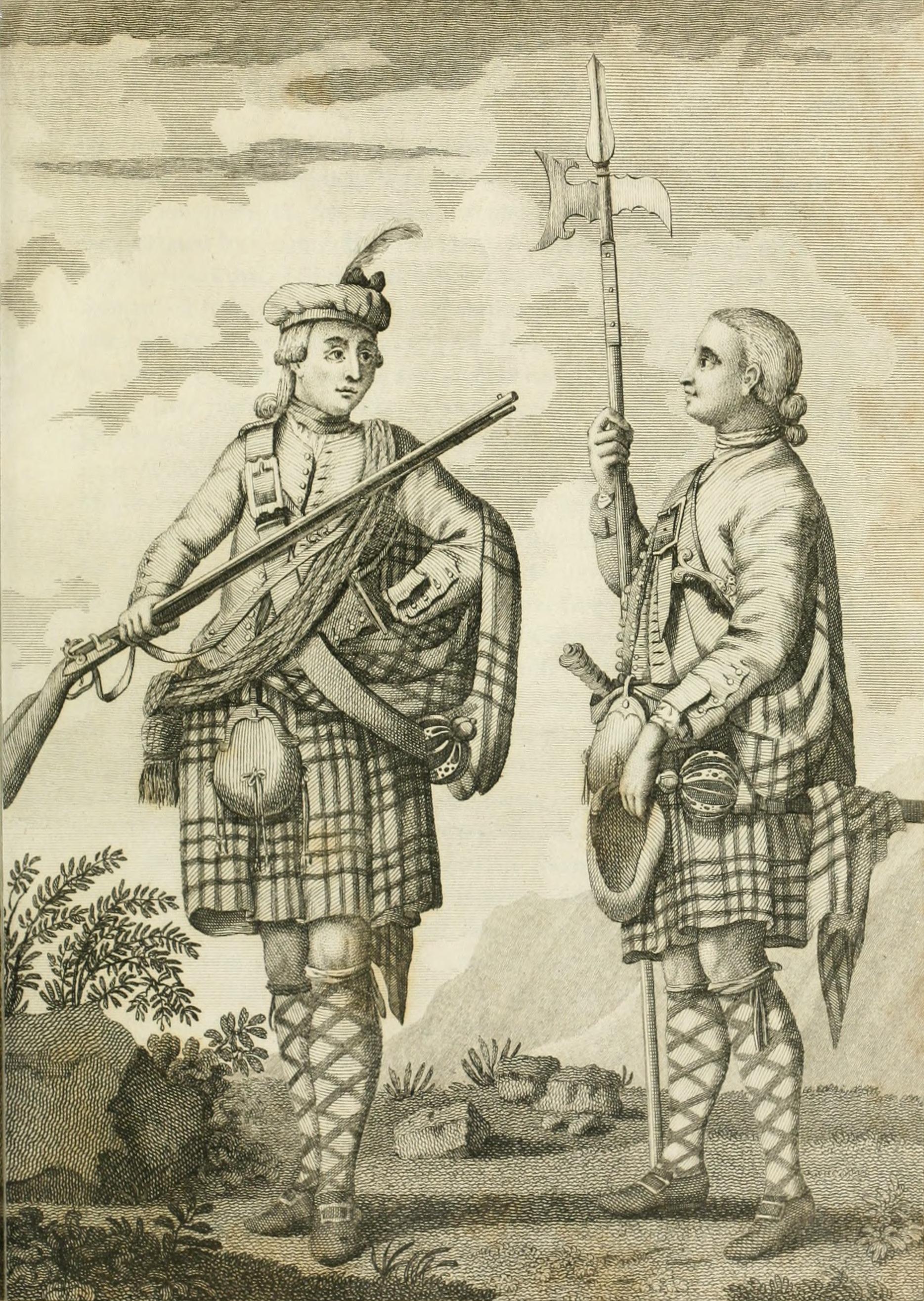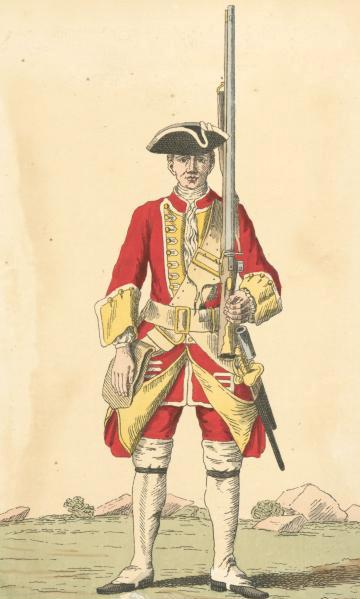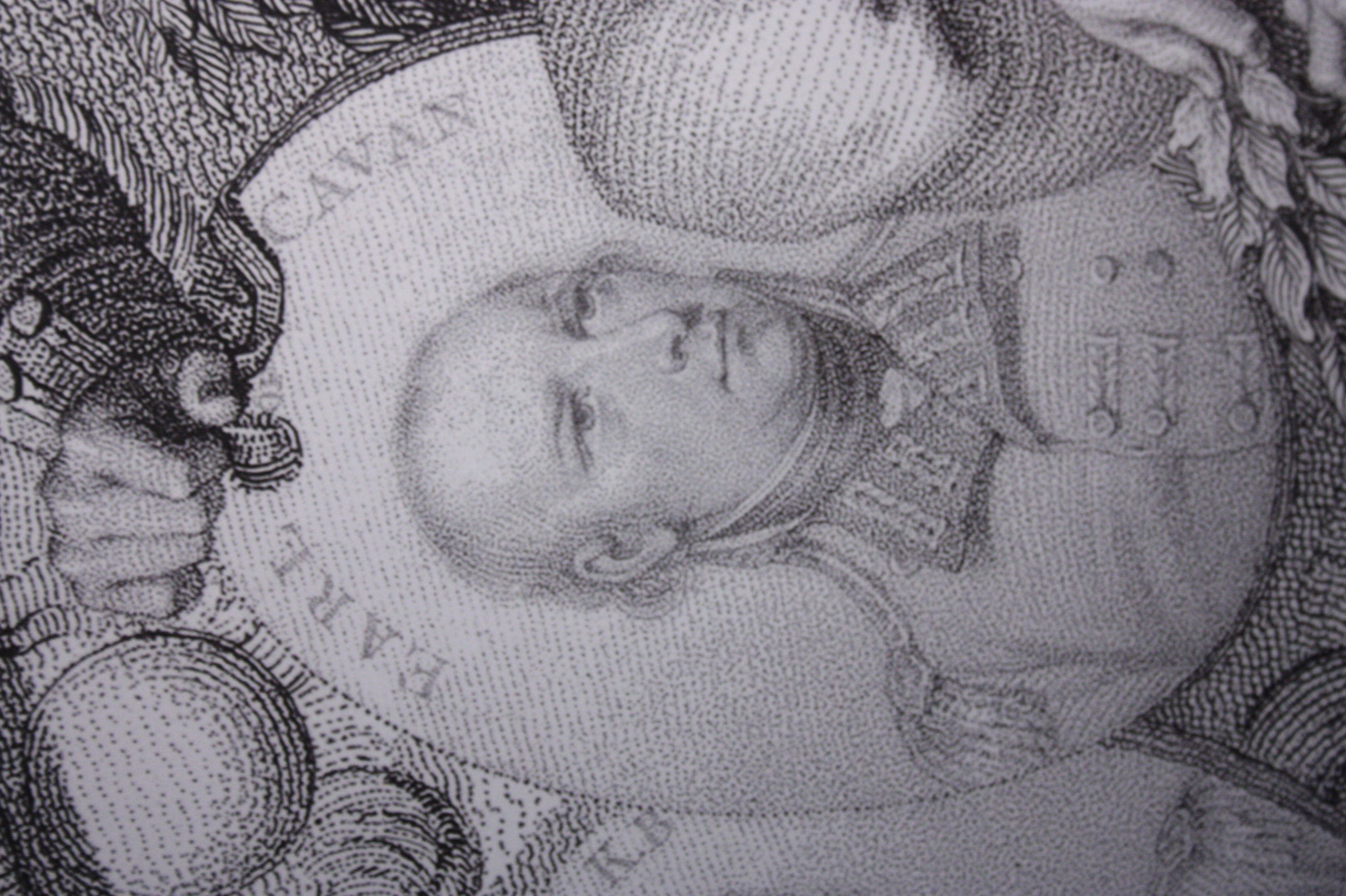|
Battle Of Alexandria (1801)
The Battle of Alexandria (also known as the Battle of Canope) fought on 21 March 1801 between the British and French armies as part of the French invasion of Egypt and Syria. Led by General Sir Ralph Abercromby, the British engaged a French force under Divisional-general Jacques-François Menou near the ruins of Nicopolis, on the narrow spit of land between the Mediterranean Sea and Abukir. The British routed Menou's army after several hours of fierce fighting, though Abercromby was mortally wounded. John Hely-Hutchinson, who replaced Abercromby, led the British army to Alexandria and laid siege to the city, which surrendered in September. Background Following Lanusse's reverse at Mandora, Menou finally arrived from Cairo to take direct command of French forces, and determined to attack on 21 March. François Lanusse would lead on the left with the brigades of Valentin and Silly, supported by the infantry Divisions of Antoine-Guillaume Rampon in the centre and Jean Reynier ... [...More Info...] [...Related Items...] OR: [Wikipedia] [Google] [Baidu] |
French Invasion Of Egypt And Syria
The French invasion of Egypt and Syria (1798–1801) was a military expedition led by Napoleon Bonaparte during the French Revolutionary Wars. The campaign aimed to undermine East India Company, British trade routes, expand French colonial empire, French influence, and establish a Commission des Sciences et des Arts, scientific and administrative presence in Egypt. Napoleon also sought to sever Britain's connection to its colonial holdings in India, with the long-term ambition of challenging British dominance in the region. Departing from Toulon in May 1798, Napoleon’s fleet, comprising around Armée d'Orient (1798), 36,000 troops, landed in Alexandria on 28 June. Advancing rapidly, he defeated the ruling Mamluks at the Battle of the Pyramids, securing control of Cairo and establishing a French administration. The campaign, however, was soon compromised by the Battle of the Nile, destruction of the French fleet at Aboukir Bay by Horatio Nelson, which cut off French reinfor ... [...More Info...] [...Related Items...] OR: [Wikipedia] [Google] [Baidu] |
Antoine-Guillaume Rampon
Antoine-Guillaume Rampon (16 March 1759 – 2 March 1842) was a French Army officer who served in the French Revolutionary and Napoleonic Wars. He fought in many battles under Napoleon in Italy and Egypt. In one celebrated battle, he rallied his troops to defend the key Monte Negino redoubt against the Austrians. He saw limited service during the Napoleonic Wars. His surname can be found among the names inscribed under the Arc de Triomphe. Early career Born on 16 March 1759 in Saint-Fortunat-sur-Eyrieux in Ardèche department, Rampon joined the French royal army in 1775. By the outbreak of the French Revolution he attained the rank of sergeant-major. In 1792, he was promoted to sous-lieutenant and fought against the Kingdom of Piedmont-Sardinia. Posted to the Army of the Eastern Pyrenees, he was appointed chef de brigade (colonel) and fought in the War of the Pyrenees. Taken prisoner by the Spanish near Port-Vendres in December 1793, he remained incarcerated until October 1795. ... [...More Info...] [...Related Items...] OR: [Wikipedia] [Google] [Baidu] |
23rd Regiment Of Foot
Third or 3rd may refer to: Numbers * 3rd, the ordinal form of the cardinal number 3 * , a fraction of one third * 1⁄60 of a ''second'', i.e., the third in a series of fractional parts in a sexagesimal number system Places * 3rd Street (other) * Third Avenue (other) * Highway 3 Music Music theory * Interval number of three in a musical interval **Major third, a third spanning four semitones **Minor third, a third encompassing three half steps, or semitones **Neutral third, wider than a minor third but narrower than a major third ** Augmented third, an interval of five semitones ** Diminished third, produced by narrowing a minor third by a chromatic semitone *Third (chord), chord member a third above the root *Degree (music), three away from tonic **Mediant, third degree of the diatonic scale **Submediant, sixth degree of the diatonic scale – three steps below the tonic ** Chromatic mediant, chromatic relationship by thirds *Ladder of thirds, similar to th ... [...More Info...] [...Related Items...] OR: [Wikipedia] [Google] [Baidu] |
Military Colours, Standards And Guidons
In military organizations, the practice of carrying colours, standards, flags, or guidons, both to act as a rallying point for troops and to mark the location of the commander, is thought to have originated in Ancient Egypt some 5,000 years ago. The Roman Empire also made battle Vexillum, standards reading SPQR a part of their vast armies. It was formalized in the armies of Europe in the High Middle Ages, with standards being emblazoned with the commander's coat of arms. General use Military colours originally had a practical use in battle. As armies became trained and adopted set formations, each regiment's ability to keep its formation was potentially critical to its success, and therefore its entire army's success. In the chaos of battle, due to the amount of dust and smoke on a battlefield, soldiers needed to be able to determine where their regiment was. Regimental flags are generally awarded to a regiment by a head of state during a ceremony. They were therefore t ... [...More Info...] [...Related Items...] OR: [Wikipedia] [Google] [Baidu] |
42nd Regiment Of Foot
The 42nd (Royal Highland) Regiment of Foot was a Scottish infantry regiment in the British Army also known as the Black Watch. Originally titled Crawford's Highlanders or the Highland Regiment (mustered 1739) and numbered 43rd in the line, in 1748, on the disbanding of Oglethorpe's Regiment of Foot, they were renumbered 42nd, and in 1751 formally titled the 42nd (Highland) Regiment of Foot. The 42nd Regiment was one of the first three Highland Regiments to fight in North America, along with the 77th and 78th Regiments. The unit was honoured with the name ''Royal Highland Regiment'' in 1758. Its informal name ''Black Watch'' became official in 1861. In 1881, the regiment was amalgamated with 73rd (Perthshire) Regiment of Foot under the Childers Reforms into '' The Royal Highland Regiment (The Black Watch)'', being officially redesignated ''The Black Watch (Royal Highland Regiment)'' in 1931. In 2006, the Black Watch became part of the ''Royal Regiment of Scotland''. History ... [...More Info...] [...Related Items...] OR: [Wikipedia] [Google] [Baidu] |
28th (North Gloucestershire) Regiment Of Foot
The 28th (North Gloucestershire) Regiment of Foot was a line infantry regiment of the British Army, raised in 1694. Under the Childers Reforms it amalgamated with the 61st (South Gloucestershire) Regiment of Foot to form the Gloucestershire Regiment in 1881. History Early years The regiment was first raised by Colonel Sir John Gibson, who had served as the Lieutenant-Governor of Portsmouth, as Sir John Gibson's Regiment of Foot on 16 February 1694. It was posted to Newfoundland to protect the colony there, losing many of its men to the extreme cold. The regiment was disbanded in 1697, but reformed under the same colonel in 1702. Posted to the continent during the War of the Spanish Succession the regiment fought at the Battle of Elixheim in July 1705 and at Battle of Ramillies in May 1706. It was then sent to the Spain, losing over half its men at the Battle of Almansa in April 1707, and then took part in the capture of Vigo in October 1719 during the War of the Quadr ... [...More Info...] [...Related Items...] OR: [Wikipedia] [Google] [Baidu] |
Richard Lambart, 7th Earl Of Cavan
Richard Ford William Lambart, 7th Earl of Cavan (10 September 1763 – 21 November 1837), styled Viscount Kilcoursie from 1772 to 1778, was a British military commander throughout the Napoleonic era and beyond. He became head of the British Army in Egypt. He suggested to the British government the removal of the obelisk known as Cleopatra's Needle (London), Cleopatra's Needle, for long centuries embedded in the sand near Alexandria, Egypt. The undertaking was considered too costly and not taken up until 1877, and the obelisk now stands on the London Embankment to commemorate the conclusion of the Napoleonic Wars. Biography He was born into an Anglo-Irish people, Anglo-Irish aristocratic family, the only son of Richard Lambart, 6th Earl of Cavan, The 6th Earl of Cavan, whom he succeeded in 1778, and his second wife Elizabeth Davies, daughter of William Davies. He was commissioned as an ensign in the Coldstream Guards in 1779. In 1798 he was promoted to Major-General, and in 1800 ... [...More Info...] [...Related Items...] OR: [Wikipedia] [Google] [Baidu] |
John Cradock, 1st Baron Howden
General John Francis Cradock, 1st Baron Howden (11 August 1759 – 26 July 1839), was a British Army officer, politician and colonial administrator. Life He was son of John Cradock, Church of Ireland Archbishop of Dublin. In 1775 he was admitted to St John's College, Cambridge. In 1777, he was appointed a cornet in the 4th Regiment of Horse, which in 1779 he exchanged to become an ensign in the Coldstream Guards, and in 1781 he was promoted a lieutenant with the rank of captain. In 1785 he purchased a commission as a major in the 12th Dragoons, exchanging this in 1786 for a post in the 13th Foot, where he was appointed lieutenant-colonel in 1789. He commanded the 13th in the West Indies in 1790, and served a second time in the West Indies commanding a battalion of grenadiers in 1793, where he was wounded at the reduction of Martinique and appointed the aide-de-camp of Sir Charles Grey, receiving the thanks of Parliament for his services. In 1795 he was appointed colonel ... [...More Info...] [...Related Items...] OR: [Wikipedia] [Google] [Baidu] |
George Ludlow, 3rd Earl Ludlow
General George James Ludlow, 3rd Earl Ludlow, GCB (12 December 1758 – 16 April 1842) was a British Army officer. Military service Ludlow served in the British Army as a captain during the American Revolutionary War. Following the British surrender at Yorktown, he was held as a prisoner of war (POW) in Lancaster, Pennsylvania. In May 1782, he was one of 13 POWs forced to draw lots to determine which one should be executed in retaliation for the execution of a patriot captain by loyalists, in what became known as the Asgill Affair. He rose to Colonel of the 1st Foot Guards 21 August 1795, and Major General 18 June 1798. In 1801 he served under Abercromby and Hely-Hutchinson in the Egyptian Campaign commanding the Guards Brigade, seeing action at Aboukir, and Alexandria (Canope). He was made Lieutenant General on 30 October 1805. In August 1807 he commanded the 3rd Division in the Copenhagen Campaign under Lord Cathcart. Ludlow was promoted General in June 1814. He was ... [...More Info...] [...Related Items...] OR: [Wikipedia] [Google] [Baidu] |
Isthmus
An isthmus (; : isthmuses or isthmi) is a narrow piece of land connecting two larger areas across an expanse of water by which they are otherwise separated. A tombolo is an isthmus that consists of a spit or bar, and a strait is the sea counterpart of an isthmus, a narrow stretch of sea between two landmasses that connects two larger bodies of water. Isthmus vs land bridge vs peninsula ''Isthmus'' and ''land bridge'' are related terms, with isthmus having a broader meaning. A land bridge is an isthmus connecting Earth's major land masses. The term ''land bridge'' is usually used in biogeology to describe land connections that used to exist between continents at various times and were important for the migration of people and various species of animals and plants, e.g. Beringia and Doggerland. An isthmus is a land connection between two bigger landmasses, while a peninsula is rather a land protrusion that is connected to a bigger landmass on one side only and surrounded by ... [...More Info...] [...Related Items...] OR: [Wikipedia] [Google] [Baidu] |
Siege Of Alexandria (1801)
The siege of Alexandria (17 August – 2 September 1801) was fought during the French Revolutionary Wars between French and British forces. It was the last action of the French invasion of Egypt and Syria (1798–1801). The French had occupied Alexandria, a major fortified harbour city on the Nile Delta in northern Egypt, since 2 July 1798, and the garrison there surrendered on 2 September 1801. Background The battle between the British and French at Canope on 21 March 1801 resulted in a French repulse. The French under Menou, disheartened by this failure, retired to Alexandria. With Abercromby's death, John Hely-Hutchinson succeeded as commander of the British force in August. He now intended to lay siege to Alexandria and bottle Menou up. Hutchinson left Coote with 6,000 men and then sent part of the reserve with Baron Charles de Hompesch to capture Rosetta. He then advanced to Cairo, which he reached, after a few skirmishes, in mid June. Joined by a sizable Ottoman forc ... [...More Info...] [...Related Items...] OR: [Wikipedia] [Google] [Baidu] |







